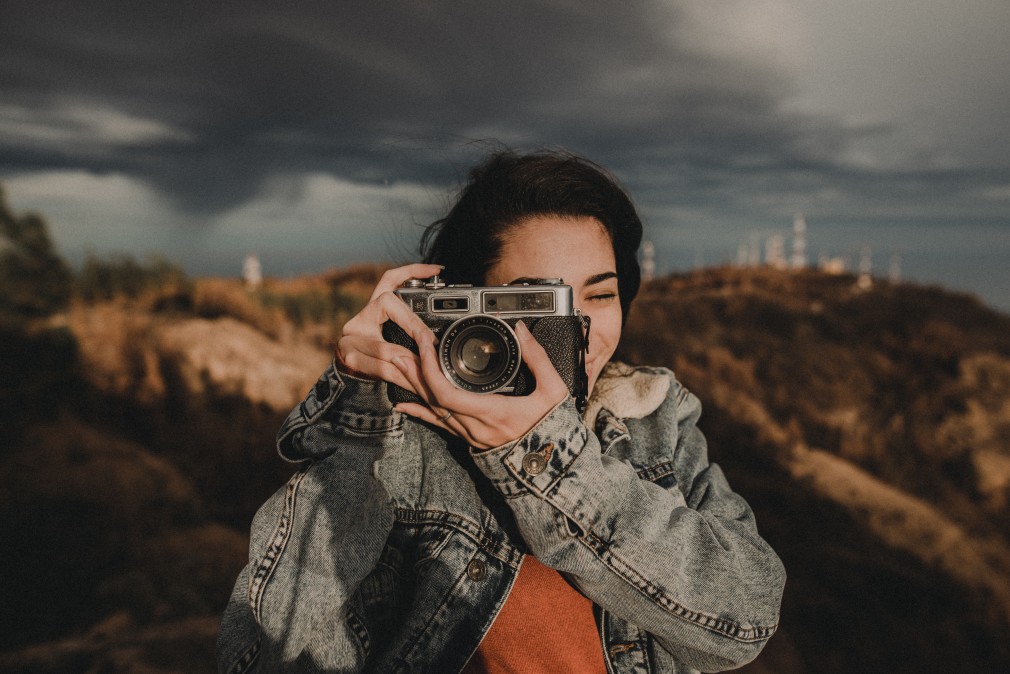Cameras like things to be gray. Not white, not black, but gray. It can spread its wings up or down from gray (a middle tone), but actual black or white, it can only go one direction. In other words, black or white is an extreme tone. You’ve probably never thought about that, but it’s true. Black and white are extremes. After all, you can’t go past black or past white. So what’s up with all this gray?
Camera Metering
Metering is based on how a tool produces an image. The tool in this case, the camera meters what the photographer considers the subject. This is determined by what the photographer focuses on. To understand this more, put your camera in aperture or shutter priority mode and look through your viewfinder. Then focus to the left and right (different subjects) and note how the shutter speed or aperture chosen changes based on where you focus.
This is the essence of metering your camera. As you choose the subject, the tool (camera) wants to make sure it exposes it correctly. Now you’ll note that if you have a dark subject (close to extreme black) then you should decrease your exposure to capture it correctly. Why is that? Black is an extreme and camera’s like middle tones or gray. So to fix the extreme black, your camera will in essence add much white to it to make it gray (which it can handle). So you must counteract this mechanism by reducing your exposure.
The same logic applies to white or very bright subjects. Once again, you’re at the other end of the extreme. And cameras don’t function well at extremes so it will take the white and try to convert it to gray. For that to happen, it must darken the image. Hence you must adjust your exposure brighter if you are taking photographs of mostly white or bright subjects. Get to know your camera’s exposure compensation settings. It can be a life saver in real time digital photography.
Camera Metering Methods
Also keep in mind that there are different ways that your camera can meter the scene. By default, it uses evaluative metering.
Evaluative Metering
Camera uses information from the entire scene to determine how to correctly expose the image.
Partial Metering
The camera meters mostly around the focus point with some area spread out. So not as defining as spot metering, but also not as relaxed as evaluative metering.
Spot Metering
Camera uses very small area around the focus point to determine how to meter the scene. This is great for night shots or a subject surrounded by mostly black such as the moon.
Spot Meter Gray Card
You can also purchase a gray spot meter card. This helps to meter or set your white balance for the current lighting conditions. These cards are already primed to be a perfect middle tone and can expose your images very well. You can meter the card in your current lighting condition and lock the exposure. You also can take a full frame picture of your gray card and tell your camera to use that image as your white balance. These are more advanced topics, but notice the card is gray (middle tone) and not black or white.
All White Party Family Reunion – Use Case
As an example, for one of our clients, they had an all white party family reunion. We offer on-site printing that they wanted at the event. The thing with on-site printing is you don’t get to fix your images in post. You sort of take the picture and proceed to print it (at least the way we do it). Either way, you won’t have hours to post process the images. So knowing this was an all white party, and having the knowledge found in this article, of course the exposure compensation was adjusted to a brighter image 2 or 3 stops. Once again, white color but camera likes gray so it will darken white, so to adjust it back to how it was prior to the tool taking over, we have to adjust the images to the bright side.
Needless to say, the response from the crowd was amazing. We pretty much printed every picture we could. Our client was very happy about our service just based on the guest’s reactions to their images in real time. It went so well that I don’t think to this day the client has ever downloaded their digital images (where we can take time to post process and such). So in essence we were paid to shoot images and print them and that was in essence part of the experience. If you weren’t happy enough to get your print, then that would be it as far as making your time more enjoyable through memories at the event. Hopefully I’m conveying the atmosphere accurately, but it was quite a spectacular feeling as a photographer.
So now you hopefully have a better understanding of your camera and why it likes gray (mid tone) vs black or white. And why your snow pictures look gray and your black shirt photos come out gray. You can certainly fix these in post, but why create more work when you can fix it in real time and wow anyone watching you work. Let me know your experiences with black and white images below!
If you are in search of a photographer for an event that knows what it takes to produce excellent images, check us out and book your event today!


1 comment